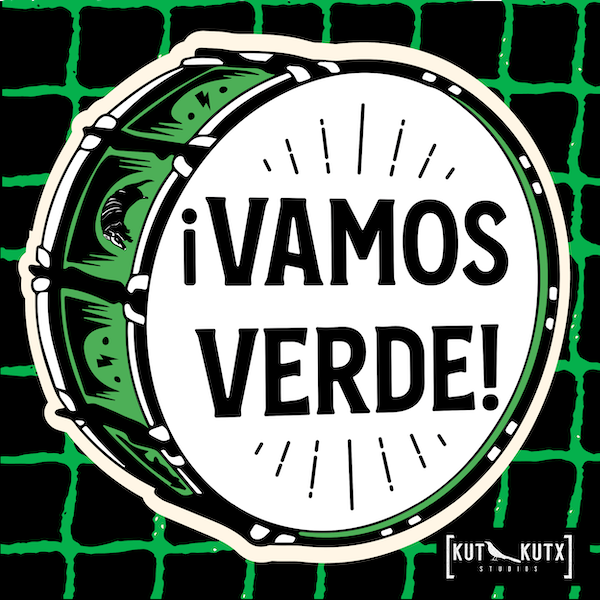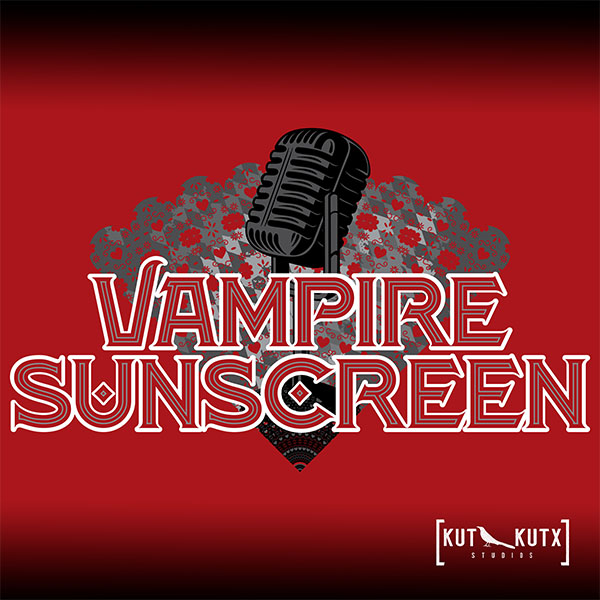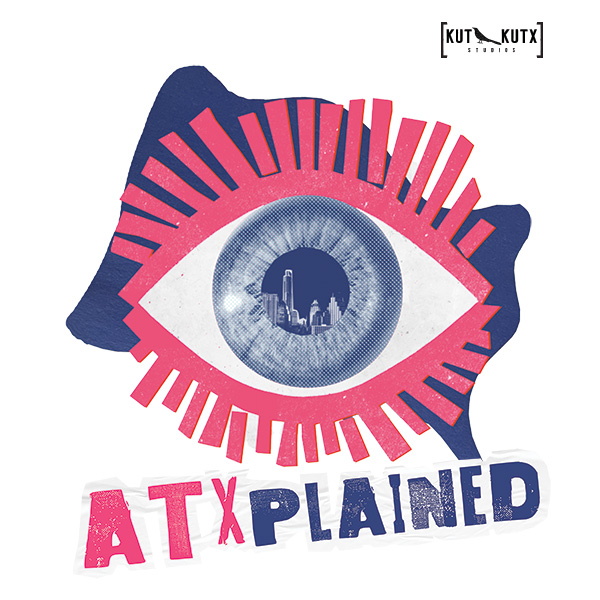Michael Young dabbled in ceramic making back in the 1980s, then after a 35-year hiatus, he returned to the hobby. Now his dining room is a ceramics studio and he spends his time trying to create perfect polyhedrons from clay.
The full transcript of this episode of KUT News Now is available on the KUT & KUTX Studio website. The transcript is also available as subtitles or captions on some podcast apps.
This Is My Thing: Ceramics!
Show intro and theme
Michael Lee [00:00:13] I’m Michael Lee and you’re listening to This Is My Thing. On This Is My Thing, we talk to people about the things they do just for themselves. It’s not their job and it is not a responsibility. It’s just a thing that brings them joy or feeds their soul.
This week, ceramics!
Specifically, the crafting of perfect or nearly perfect polyhedrons. My guest today is Michael Young, who has spent his career as a research professor at UT and has spent the past several years sharing a love of ceramics with his wife, Cathy.
Michael Young (in his home studio) [00:00:43] So I got three. So I need five of these for the side. For the last side.
Michael Young My name is Michael Young and my hobby is making ceramics and 3D polyhedron shapes out of ceramics.
Michael Lee [00:00:56] Let’s start at the beginning. You first did ceramics many years ago.
Michael Young [00:00:59] Yeah, I had to take a non-science class when I was in undergrad, and ceramics seemed to be a class that was open and well, I figured, okay, that seems like a pretty cool class. It’s an art class. I don’t think I have any art attributes at all, and so I figured I would just take this art class, and at the same time, I was taking a course on crystallography. And when the teacher, the professor said, well, you have to make something, I thought, well, maybe I can make a crystal out of clay. And that was back in 1984. So it’s a long time ago. And so it’s just something that I did that I really got into. And I still have the same pieces I, I made when I was a student back in the 80s. And then I took a hiatus of like 35 years, not really having an opportunity to take this a back up as a hobby. And and then before, just before the pandemic, my wife and I took a class at Doherty Art center, like an evening class in ceramics and and then I just, I kind of picked it back up again and, and and that’s kind of how we got going again.
Michael Lee [00:02:08] When you and Kathy took that class, were you looking for something like this? Did you did you feel like you needed a creative outlet or just a hobby of some kind?
Michael Young [00:02:19] I so Kathy’s really is she’s sort of my anchor in life. And if if it had not been for that, I would just work all the time and I would just work and publish papers, you know, because I work at it and like, our job is this is what our job is to research and publish papers. And so I, I would get very, very focused on that, probably a little OCD. And she’s like, well, I really need to get this guy to focus on something else. And she, hey, what do you think about a, a class in ceramics? I was like, sure, you know, let’s do that. And, and and it just it took and now it’s a hobby we both do and we both really enjoy. So it was really not me seeking out a creative outlet because I, I would have never raised my head up high enough to think I really need a hobby. Okay, so we are in our dining room, which has been converted into a studio for doing ceramics work. So it was really during the pandemic, probably in 2021, where we realized we were going down a road that we were not going to back up from. So we we have all these shelves here that that are filled with tools and glazes, and it’s it’s actually really taken over the entire downstairs. And it continues to expand into other parts of the house.
Michael Lee [00:03:39] So when you get your hands back on that clay, 35 years later, you and your wife, you said right before the pandemic, right?
Michael Young [00:03:46] A couple years before the pandemic, you know, we were able to sign up for a class in clay and my wife Kathy, she worked on the wheel and I just worked on slabs. So you just basically take a lump of clay and you roll it out into, into a, into kind of a flat slab. And then from there I just said, well, I just want to go ahead and try to sort of recreate this piece that I had made when I was a student back in the 80s. And it’s a 12 sided polyhedron, like a crystal, and it’s known as a dodecahedron. It’s really a vessel has a top on it, and you can put stuff into it. So it has a function. And I just thought, well, I’m just going to go ahead and try to make this. And, and I just kind of sat off in the corner and everybody’s like interacting, you know, with with each other. And I was just like, okay, I have to interact with people all day long at my job. I just more or less want to be left alone. But I started thinking about how to make this, and I had to make the forms, and I had to get the angles right for each of the corners of this, of this. This Pentagon is, is essentially a five sided, five sided shape. And and you need 72 degrees basically on this five sided shape. And so I had to come up with a protractor. You know, I’m trying to do all the angles and people are staring at me probably wanting to leave me alone. Thought that was probably weird. And so I made the first one and it came out pretty good. And I made the second one. It came out pretty good, and after a while the instructors were like, you know, you really have something going on here and you should just focus on making this one thing. But it’s challenging because you know, you’re in there for three hours a week. And so one week you make the slab and you make the cuts, and then you put it together and then you have to shape it and then you have to then you have to fire it the first time. And it actually you can only make 1 or 2 the entire eight week course.
Michael Lee [00:05:34] There is a certain amount of patience involved in working with clay.
Michael Young [00:05:37] There is. You have to be patient and and but at the same time, the clay is incredibly forgiving, right? I mean, this is geologic material. It’s been around a long time. And and so if you make a mistake, you can more or less rub the mistake away, or you can just make it again. Right. But yeah, you really want to be patient. This is not something that you’re going to be able to make unless you’re really, really good. And I’ve seen people that can roll out plates in minutes, you know, and but these are, you know, these are professional potters. I’m not a professional potter. I’m barely, you know, a ceramicist at all. I’m just like some dude. And so I’m like, okay, well, I so I try to put these things together, but my, my key was really to make the finishing as clean as possible, to make it as perfect as possible.
Michael Young (in his home studio) We have lots of rulers. We have all these stamps that have really kind of neat patterns on it, and she’s much more into functional ware. So she makes bowls. So she’s in one part of the dining room table and I’m in the other part and we talk through, okay, how should this look and what kind of stamps should we use. Or maybe a little textures. You know, we have these little rollers, but I’m really into the crystals, you know, and the and the sort of polyhedron which are, which to me are quite fascinating and were more or less mathematically derived by, by Euclid and Plato back, you know, 350, 400 BC. And to me, that’s that that’s the really fun part because they’re really, really challenging to get perfect.
Michael Lee [00:07:06] The idea of of perfection has come up a few times. And you and I before, before we met in person, we had like a sort of a zoom chat. And at that time you mentioned a previous This Is My Thing episode where we talked with a woman who’s a glassblower, and she talked about how empowering it was to give up the idea of creating something perfect. And you said that that was not…
Michael Young [00:07:30] Super hard for me to do that. You know, I and I and I understand that me looking at the piece and the art, it’s very different than you or anybody else looking at it who would never who would actually see what I consider to be imperfections, to be features.
Michael Lee [00:07:48] Right.
Michael Young [00:07:49] And and so there’s this whole concept in art, I guess it’s called wabi sabi. And I think it’s Japanese where it’s sort of I think it means embrace the imperfections.
Michael Lee [00:07:59] Right. It’s something along those lines.
Michael Young [00:08:01] Along those lines. And, and because what we what I see as the creator is not what you see as the viewer. I mean your that the piece might speak to you and the and and the and the differences and the uniqueness of each piece. I really enjoy seeing that each piece is a little bit different, but I sure would like those angles to be sharp. And if they’re not, it’s like, oh my God, it really bugs me. So I try to, you know, this is this is part of life’s journey, right? Is to try to improve. And I’m okay. I guess I got to embrace wabi sabi a little bit, but it’s hard to do for me.
Michael Lee [00:08:35] Is that is that though a goal for you? Would you like to to get to where — are you aiming for absolute perfection or aiming for being okay with imperfections? Or have you decided?
Michael Young [00:08:47] Absolute perfection. I admit it. Okay. Guilty as charged.
Michael Lee Absolute perfection. You have decided.
Michael Lee [00:08:52] But you’ve chosen a medium that is out of your control in some ways. Because yes, you can sculpt something and it might look perfect to your eye, but then it’s going to go into an 1800 or so degree.
Michael Young [00:09:04] That goes all the way up to 2200.
Michael Lee [00:09:06] 2200 degrees. And things are going to change.
Michael Young [00:09:08] Yeah. Yeah. No, it’s I totally hear you. And, you know, I could probably 3D print these crystals up, but then, then, you know, then the human hand doesn’t touch it. Right. And there has been, you know, ceramics has been part of the human experience for like, what, 5000 years? It’s amazing actually, you know, that some of the really, really earliest tools and containers and vessels were made out of ceramics back, you know, way, way long ago. Right. And we still have these pieces now. And so I totally I hear you, I take the advice, you know, I work it all.
Michael Lee [00:09:41] It’s it’s not advice. I’m just pointing out that that you… it’s interesting that you’ve you have… Yes. You could if you just wanted a dodecahedron you could design it in, in on a computer. Absolutely 3D printer, absolutely precise. Yep. But then what would be the point of that?
Michael Young [00:09:57] What would be the point of that?
Michael Young (in his home studio) There’s each vertice has three intersecting sides. I really try to get that really, really sharp. You can tell if the piece is really distorted and didn’t come out very well. If the vertices are either off center or, you know they’re distorted or they’re goofy looking and you know, if you’re going to go this much hassle and this much time, or you really want to try to get it, you try to want to nail it. So, okay, this is the last piece. So all of the imperfections are going to be seen in that last piece. And I just try to fit that in there real tight and look at that like magic. So the piece fits really nice.
Michael Lee [00:10:45] You said you weren’t seeking out a hobby, that it wouldn’t have occurred to you that you might need one, but once you did kind of find this one and it became a bigger part of your life, do you feel like you were missing that before?
Michael Young [00:10:58] Yeah. I mean, I for sure, and I think that, you know, early on in, you know, in your career arc writer, particularly in the academics. I mean, you’re you pretty much have to be at least the way that I, the way that I sort of live my life and kind of design my career. I really needed to focus. You know, I’m not the genius here, so I like I just put in hard labor to basically get stuff, get stuff done to a point that I, I find it to be acceptable. I probably could have used a hobby. Cycling was road cycling was my hobby for many years. In 25 years still is. And that was probably my release. And that was a Kathy against saying you really, you know, hey, let’s let’s get you a bike, you know. And then she didn’t realize what she had unleashed. And so but that’s not really creative, right. That’s being outside and and and riding which is fantastic. And it’s it’s super fun. But but that’s not really a creative outlet. And so this is actually started to take cycling time. The ceramics and. And so it’s to me maybe it’s a better balance. Better life balance.
Michael Lee [00:12:08] It’s taking up more of your time and also more of your space. I was at your home two days ago. Yeah. It has. Your dining room is essentially a ceramic studio.
Michael Young [00:12:17] We had a, you know, we had a dining room and we had this, like, really nice long table that we brought when we were living in Nevada. And that now is a complete ceramic studio. We have all of our tools. We have, you know, we produ protected the wooden table, thank God, by having these really large mats that you could probably get at the arts, at the art store, the craft store. And but yeah, we have we’ve made a complete studio in the dining room. We have all the glazes. We actually have like really nice, you know, shelf that we could show the pieces, you know, and, and so that dining room is now completely taken over by ceramics. And now half of the garage is taken over by as well, because we had to have shelves for the tools and the forms and the slab roller table.
Michael Young (in his home studio) And so that’s all there is here that I can think about. And we can go to the garage and and I can show you what the what that looks like. Okay. So I’ll set the stage. Okay. So on this side. So the stage is we bought essentially a slab roller. It’s a large metal stand with these two metal rollers on it. And what you do is you lay a couple of pieces of sort of burlap material onto this flat surface, and you cut some clay, and you lay this slab, this sort of mound of clay, and then you roll this through the, the slab roller and it comes out perfectly flat. And, and especially because you can, you can choose how thick you want it. If, if you want it to be thicker, you know, you can make a much thicker. We haven’t sold any pieces. We just make them and we give them away. We actually take almost all of the pieces. We either give them to friends and family or we we we donate them to Austin Pets Alive. You know, the thrift store that’s on Burnet? Yeah. And we just give them all the pieces and then they sell them, and then they take care of the take care of the dogs. Oh, that’s really nice. Which is, which is super. But but some of the pieces, you know, we have a little, you know, Instagram page and we post a few of the pictures and people seem to really enjoy them and, and, and people have really appreciated and loved the pieces that we’ve given them as gifts. And so to us that that’s that’s really fun. But I mean, is this ever for us going to be, you know, an actual income stream? That’s not the goal. But hey, if there’s somebody wants to buy a piece and we can get some more clay with that money, that’s great.
Michael Lee [00:14:52] I have talked to several people who who do currently sell stuff on Etsy or other places, and for a lot of them, it is basically just to make enough money to keep doing the thing.
Michael Young [00:15:03] Yeah. We got to feed the habit.
Michael Lee [00:15:04] Yeah. Yeah. Pay for the clay by selling a few of them.
Michael Young [00:15:07] Exactly. We feed the habit. But but, you know. But that’s not really. You know, that’s not really the goal. I mean, you know, we we both had long careers and and, you know, for me, it’s, you know, it’s kind of coming to an end and okay, what would I like to do. What what are some things that we could do that would, you know, bring some joy to other people? We could volunteer and do all those things. And that’s great. And this is just something that we would be able to do as well. It just adds a little bit of kind of texture to the to our lives.
Michael Lee [00:15:38] Do you think you’re going to keep doing it for the rest of your life?
Michael Young [00:15:41] I hope so. Yeah. Yeah. I mean, it’s just fantastic. You know, any takes time to make that perfect crystal.
Show theme
Michael Lee [00:15:54] Thanks for listening to This Is My Thing. I’m Michael Lee and I produce the show. Special thanks, of course, to Michael Young for sharing his love of ceramics with us and to his wife Cathy for recommending him for the show. If you haven’t seen them already, you can see some photos of Michael at his home studio on our show page at KUT.org. We’ve got more This Is My Thing coming soon. We’re working on stories about a group of friends who started a cake club, a guy who collects meteorites, and a bunch of other interesting folks that we haven’t had a chance to interview yet, but we will! Keep listening to hear those stories and plenty more. If you’d like to tell us about your thing, and maybe be a part of a future episode of the show, that’s pretty easy. Just go to the This Is My Thing show page at KUT.org You’ll find a form on that page to tell us about your thing. And if you’re so inclined, you can look for other forms on the KUT website as well, including the one you can fill out to become a member of the station. Our members make this and everything we do possible.
This transcript was transcribed by AI, and lightly edited by a human. Accuracy may vary. This text may be revised in the future.





